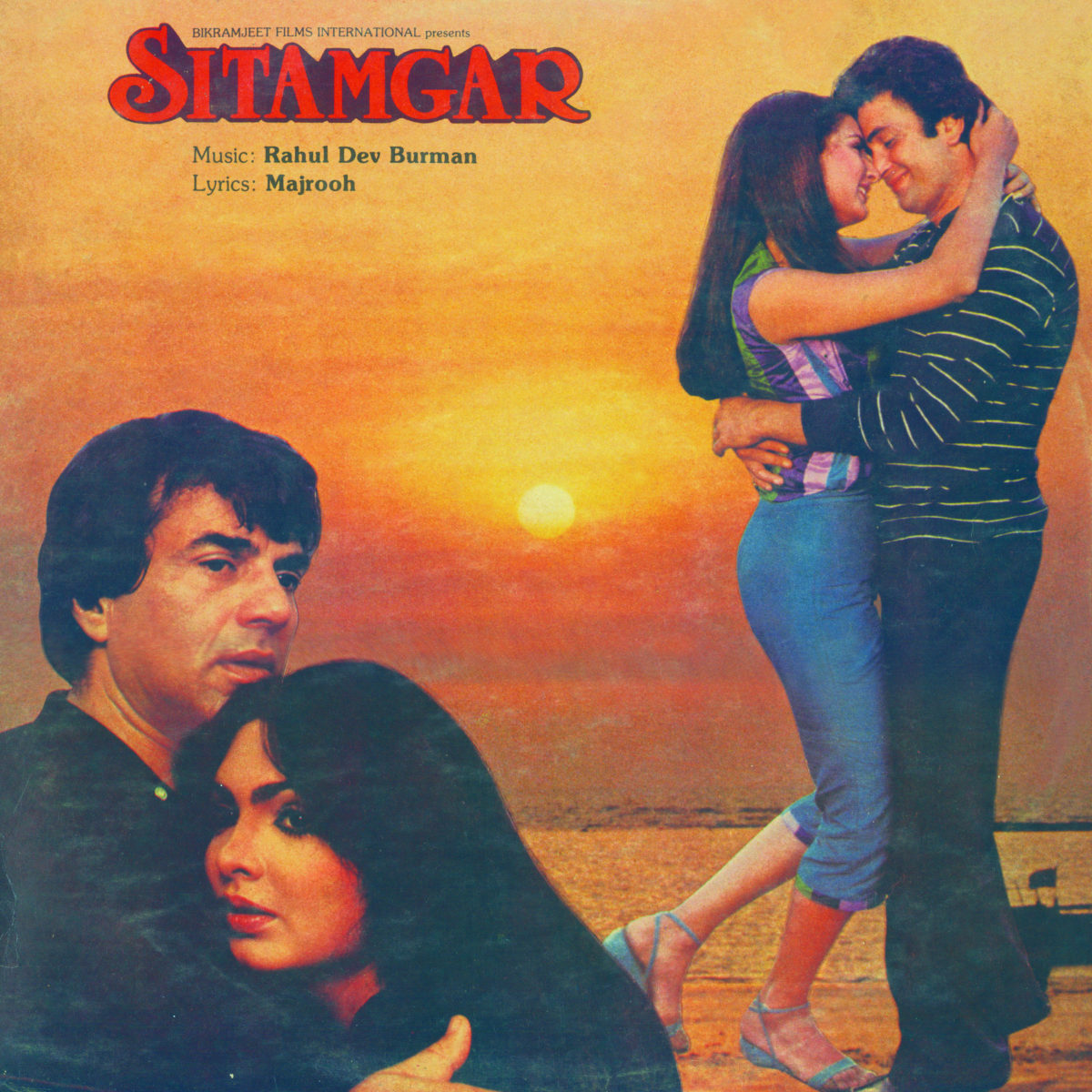Pyar Jab Na Diya Zindagi Ne Kabhi …

Film: Sitamgar (1985)
Producer: Bikram Singh Dehal
Director: Raj N. Sippy
Lyrics : Majrooh Sultanpuri
Singer: Kishor Kumar
–
The case of the “Sitamgar” soundtrack is a strange one. All the songs on this album were gems. Even the unreleased seldom-heard Shailendra Singh song “ kisii Gariib ke dil se” (having had the privilege of hearing it a couple of times, I am willing to accept this as his best song ever) was testimony to Pancham’s ability to elevate even mundane common place lyrics with his melodies and musical embellishments. Yet, the soundtrack languishes in the doldrums. It’s very rare, and neither the CD nor tape is as easily available as some of his other soundtracks. You’ll be in luck only if you snag a few of those rare compilations with strange names and manage to find a stray inclusion. All this means that the soundtrack remains relatively “under-sung”. Although the ISB transcriptions are almost all there, they can only present the lyrical content with hardly any hint of what Pancham had to offer to the song. It thus seems fitting to choose a song from the album (also the first song that I remember having heard from the list).
As a lyricist Majrooh has swung between the sublime and the pedestrian. He seems to have stuck to the latter here, except, as Vinay noted in his transcription, dropping in a tasty bit like “ wo to kahataa rahaa, zi.ndagii ke liye / ek muhabaat ke sivaa kuchh na mujhako chaahiye”. Given these relatively ordinary yet effective lyrics, the onus is on Pancham to (if I may use a cliché): add some yeast. This he does with great aplomb. I have a dim recollection of the film itself, and the only song I remember on-screen is “Pyar Jab Na Diya Zindagi Ne Kabhi…”. I am told that this, being the title song (the title features prominently enough to justify this claim), features during the opening credits, as Dharmendra rides a horse. There’s the element of the western, and thus related notions of the loner, the lone gunman on a mission that we will soon find out more about. Perhaps that explains the use of the guitar and the harmonica, two of the definitive ornaments on the background scores of countless westerns (especially the spaghetti ones).
The prelude begins with an electric guitar and an acoustic guitar working through a common chord progression. The acoustic guitar provides arpeggios; the electric guitar plays about with small variations and leading fragments connecting the chord changes. When the drum kit kicks (no pun intended) in for the second run through the progression, the only accompanying pattern is played out on the hi-hat. Once two iterations are done, we are treated to the next fragment: this comprises the ubiquitous bass guitar finally making its appearance, the guitar playing chords with a rhythm pattern that employs slides, and the harmonica providing the melodic component. At the end of this fragment, the strings join in for a plush run, and a synthesizer relay run provides the glue to take us the end of the prelude and Kishore begins right on cue.
The rhythm for the song is a characteristic Pancham pattern. In fact, it’s almost always one of the giveway hints when you’re trying to figure out if a song is a Pancham creation or not. While the familiar elements (the bass guitar, the hi-hat, the strings providing filler runs) run in the back as Kishore articulates Majrooh’s words, Pancham manages to add something subtle (well, not really, since you can hear it rather clearly) and interesting. He tosses in a single tabalaa beat to accompany the hi-hat and create a fairly simple composite rhythm that doesn’t steal the thunder from the song, and yet, offers a small reward if you’re paying close attention.
The first interlude is short and high on synthesizer and strings, with the bass guitar providing the runs.
The first a.ntaraa features fills from what is most likely the synthesizer with a tone that seems like an electronically embellished sa.ntuur. The other appealing aspect is represented by the fainter violin fills accompanying the tail end of the verse.
The harmonica returns to form the melodic core of the second interlude. This time Pancham gets the electric guitar to provide strums on the lower strings to complement the bass runs (thus adding what might seem like a disjoint delayed echo to the key bass notes). The violins connect the end of the section to the second a.ntaraa, which functions just like the first for the most part.
Is that brass opening the third interlude or a convincing facsimile on the synthesizer? The strings return for the middle, before a synthesizer riff connects us to the third and a.ntaraa.
As Kishore ends the muKa.Daa near the end, the bass guitar provides familiar connecting phrases and the song draws to a close sans fanfare.
George Thomas
Panchammagic.Org

